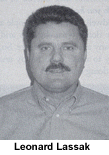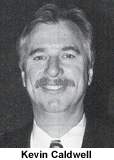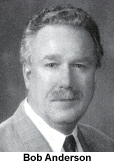
As the disparity between mechanical labor rates and collision repair rates continues to grow, collision repair shop owners and operators are striving to make their businesses more and more efficient in an attempt to maintain profits and compete for entry-level employees. The fact that insurers are focusing on cycle time to reduce costs is also forcing repairers to become more efficient.
An additional driver of efficiency is the insurance industry’s desire to be given certain concessions in order to reduce their claims costs. These concessions may involve labor discounts, parts price discounts, the use of less profitable parts, paint material capping. etc. These concessions, whether you concede to them or not — someone will — creates an atmosphere that has a negative effect on profit.
I’ve been in the collision repair industry for 38 years and have been a shop owner for 30, so I’ve witnessed a lot of change — some of it good and some not so good. We’ve made tremendous gains in getting paid for what we do. This is ongoing, I know, but from the point where I began to today, the advances we’ve made are very positive. Many would argue that we still have a long way to go — and we do. But we now have avenues to achieve these goals, which we never had years ago. Our trade associations, the Collision Industry Conference, our suppliers, the trade press and I-CAR have all identified the necessary steps to properly repair a collision-damaged vehicle and the necessity of being properly compensated for these steps.
Hand in hand with getting paid for what we do has come an improvement in quality. Not only has the repair work itself increased in quality, but so have the automobiles we repair. There’s a vast difference in the quality of a ’58 Ford Galaxy and a ’98 Ford Taurus. Repair processes, however, have become much more complicated, sophisticated and, overall, more labor intensive.
Despite the labor-intensive nature of many repairs, we live in a society where speed is becoming more and more important. And efficiency, in and of itself, is a good thing for cost control reasons and for improvement in general. We should all strive to do our work better and quicker by implementing more efficient methods. And, hopefully, through the natural progression of experience, we’ll continue to improve in this regard.
But how is our drive to become efficient affecting our labor pool?
I’m going to do my best to be neutral (my editor likes this), but as a participant and observer of this industry, I feel my observations and experience should be of some value to you. At least I hope so!
Good People Are Hard to Find
The last five to 10 years have been characterized by labor shortages. Not just in our industry, but in many industries. The Department of Labor published statistics that show approximately 77 million "baby boomers" retiring in the next 10 years. Replacing them are approximately 44 million entry-level people. I’m assuming that since we live in a capitalistic society, those 77 million boomers must be producing something of value. Therefore, those 44 million "newbies" will have plenty of work to do and had better be pretty damned good at it because we’re definitely going to need them.
In addition to this forecast is the current need for enhanced efficiency to maintain profit and the fact that skilled technicians are difficult to find already. Good entry-level people are also at a premium.
This has forced repairers to create non-traditional work forces, led by a decreasing number of highly skilled and older technicians. When I say non-traditional, I’m referring to people who only do tear down and bolt-on assembly, welders who do only welding after the part is correctly aligned by a structural technician or perhaps a mid-level tech, metal straighteners who remove dents, and structural alignment specialists who focus on frame work and unibody structural repairs. Of course, the same thing takes place in the paint shop, with specialists focusing on masking, prepping, color matching and application. Each team has a leader, along with a production manager who supervises the team leaders.
Everything works pretty well, as long as there’s a sufficient workflow that’s balanced enough to allow everyone to stay as busy as possible. Sounds pretty idyllic, but it is possible. And it better be, because it sure isn’t efficient to have anyone sitting around.
But how do we train technicians in this scenario, and do we want a two-year vocational grad in a scenario like this — who seems too qualified or not qualified enough to fit readily into it? While the vocational schools are trying to produce a well-rounded, entry-level tech, our efficiency-driven setup wants specialists.
A Q&A with 4 Shop Owners
What does the future look like down the road for our prospective employees? Will they be able to envision a serious future as a highly skilled and compensated technician? If so, how will they be trained?
I was first exposed to this concept many years ago, when I visited a high-end shop in Glendale, Calif., as part of a shop tour that was connected to a 3M ARMS convention in Santa Clara, Calif. The shop was pretty traditional, except in the paint department. The owner explained to us that he hired willing entry-level people as preppers, trained them and put them to work for a maximum of two years — after which they were discharged, no matter how good they were. Holy cow! This raised some eyebrows and elicited some questions from our tour members. The owner explained that he had one of the finest shops in the area and that any prepper having worked two years for him could readily pick up employment. He said he already had two excellent painters and didn’t need any more. So rather than lock someone into a job with limited opportunity for advancement, he put an employment term on the job and was also able to control his costs.
He told us that he’d been using this process for several years, with success.
Interesting concept. But it’s not the only concept. To get even more input, I interviewed four highly skilled and successful shop owners — all long-term owners with a lot of experience behind them.

1. Leonard Lassak.
First I spoke with Leonard Lassak of Thoroughbred Collision Centers. I’ve known Leonard for many years, and he’s developed into an extremely progressive and forward-thinking businessman. Five of his collision repair facilities are located in the Seattle Metropolitan area. He also has another shop in California.
Mike West: Leonard, how do you advance your employees from entry-level to journeyman?
Lassak: First off, you’ve got to be a S.W.A.N. to work at Thoroughbred.
M.W.: What’s a S.W.A.N.? (Of course, I’m thinking a beautiful large bird. But I doubt that’s what he means.)
Lassak: Smart, Willing, Ambitious, Nice. You’re a S.W.A.N., or you’re gone.
M.W.: I like it. So I take it that attitude is a very important part of your employment program?
Lassak: Absolutely! We don’t want to spend a lot of time and money training someone who really doesn’t like automobiles or working on them. I’ll ask a potential new hire if he had a car before he had a girlfriend. If he had a car first, we try to make a tech out of him. If he had a girlfriend first, estimator.
Lassak works his technicians in three- and four-man teams, with Category 1, 2 and 3 level technicians. A Category 1 is an entry-level tech, 2 is a mid-level who does R&R and R&I, and Category 3 is a Master Technician/ASE Certified. This tech does the metal straightening, structural repair and replacement, and most of the welding. A team leader supervises the teams and manages the techs and the jobs they’re working on.
I asked Lassak how techs progress from category to category. He said he liked to keep a close eye on Category 1 techs to determine if they were going to develop. When they look favorable, he begins investing in training and moves them to a Category 2 position. You have to be continuously growing your business, he says, to provide advancement opportunities in the team concept plan.
Lassak draws heavily on the vocational schools for entry-level people but says they can’t meet his total need — so he also looks elsewhere for his S.W.A.N.s.

2. Kevin Caldwell
Next, I talked to Kevin Caldwell, a second-generation collision repairer from Autobody by Caldwell, in Laguna Hills, Calif. Caldwell operates a facility with about 20 employees, 13 of whom are technicians. His experience has ranged the full gamut, from cleanup kid to general manager. He loves this industry and the people in it, and he devotes a lot of time and effort to improving our industry through associations and activities.
M.W.: Do you work the team concept at Autobody by Caldwell?
Caldwell: No, not in the strict sense of the term. Some journeymen have helpers and others prefer to work alone. We try to assign work based on ability, with the more skilled techs working on the higher quality cars.
M.W.: Have you noticed any change in the entry-level people over the past 10 years?
Caldwell: Yes. Here in California, we have a large population of immigrants. Many of them are from Mexico. They have a strong work ethic and are willing to learn in order to advance. We’re seeing less and less Anglos, and some of them are spoiled brats who want everything handed to them.
M.W.: Do you hire fully qualified techs or try to hire entry level and train up?
Caldwell: For the most part, we try to build our own so we don’t hire someone else’s problem. It’s easier to train if you can find a willing attitude than to re-train when someone is set in his ways.
There was that word again: attitude.
M.W.: How do you advance your technicians?
Caldwell: Strictly on ability and attitude. You can have the most highly skilled technician in the world, but if no one can work with him, he’s no good to you. We’ve all seen them. It’s also very important to compensate fairly; otherwise, you’re just wasting your time and training expense.
M.W.: If a tech does a satisfactory job but shows little interest in advancing, do you keep him?
Caldwell: Yeah, some people are just happy doing what they do and don’t want any additional pressure. So, yeah, we try to make them happy and keep them doing their thing.

3. Bob Anderson
Next I spoke with Bob Anderson, another well-known and successful shop owner. He owns Anderson’s Automotive Service Center in Sheffield Village, Ohio, and for many years has operated a full-service repair facility — doing both collision repair and mechanical repair.
M.W.: How do you advance your technicians?
Anderson: Advancement at our facility is based on merit, i.e.: productivity. We require a minimum of 40 hours of training per year, plus ASE certification to verify that the message was received. As an entry-level person advances, it’s important to see that he’s paid fairly in order to keep him as an employee. You don’t want to put a lot of time, money and training into a tech and then see him go somewhere else because you were cheap. Be fair and treat them like you’d want to be treated.
M.W.: Do you work your techs in teams?
Anderson: No, we don’t. We work them individually. That’s not to say our journeymen don’t have helpers; they do. We just feel that for our operation, the team concept wouldn’t work well.
M.W.: Do you try to hire a qualified journeyman if you need one, or do you train to fill the need?
Anderson: Well, ideally we’d like to have a person who we trained for a few years who was in a mid-level position and ready to move up [to replace] a journeyman who decided to improve his tan, loaded his iron and headed West. That doesn’t happen very often, unfortunately. So we try to hire for the need we have and work with the individual to teach him our methods.

4. Joe Sanders
Let’s go down to Colleyville, Texas, to talk to Joe Sanders. Sanders owned two collision repair facilities and sold them to Caliber Collision. After working for Caliber for a few years (he still does some work for them occasionally), he’s now a collision repair business consultant.
Sanders spent much of his career working to improve our industry and traveling to many shops, where he’s witnessed many, many different ways of "skinnin’ the same cat," as they say in Texas.
M.W.: Where did you get your entry-level technicians from? Was it a problem because Caliber is so big?
Sanders: We try to draw as many as we can from the vocational schools but, unfortunately, they just can’t supply enough. So we’re always on the lookout for people who like cars and would like to work on them. We also promote from the bottom up. If we see a detailer who works well and is interested, we’ll train him for a team.
M.W.: So you use the team concept?
Sanders: Definitely, but not exclusively. We have some excellent techs who don’t want to be part of a team, but they usually change their minds after a while, when they see how it works.
M.W.: How do you advance your technicians?
Sanders: Productivity, improved skill level and attitude are all indicators that we use to advance our people. Having a large enough facility or facilities gives the techs places to move to.
M.W.: If you have an employee who does his job well but doesn’t want to advance, what do you do?
Sanders: We keep them. We want everyone to advance, just because it improves their quality of life. But some people just don’t care [to]. They’re happy where they’re at and, frankly, we need them. People who can do their job well are hard to find, whether it’s the wash boy, detailer, parts person or master tech. You need them all to get that car out the door properly repaired.
Writer Mike West, a contributing editor to BodyShop Business, has been a shop owner for almost 30 years and a technician for almost 40 years. His shop in Seattle, Wash., has attained the I-CAR Gold Class distinction and the ASE Blue Seal of Excellence.













